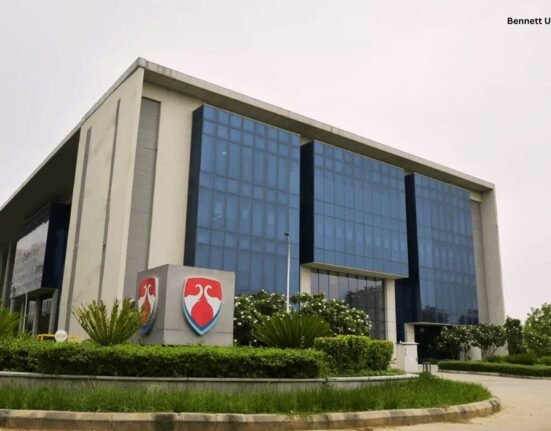Ethnic conflict has pushed the small Indian state of Manipur into what many have labeled a state of civil war, as the two main tribes. The majority Meitei and minority Kuki, fight for territory and dominance. This week, shocking footage emerged of an assault in May in which two Kuki women were paraded naked by Meitei men shortly after their hamlet was burned, in the region’s latest use of terror against women.
Faced with an uncertain future amid ethnic conflict, displaced people in strife-torn Manipur, particularly youngsters, are gradually succumbing to despair, according to officials. They began arriving at the rescue camps in early May, the youngsters traumatized. They have not entirely healed after frequent counseling.
What is Ethnic Violence?
Ethnic violence is a type of political violence that is driven by ethnic hate and strife. Ethnic terrorism or ethnically motivated terrorism refers to forms of ethnic
violence that bear the features of terrorism. “Racist terrorism” refers to a type of ethnic violence characterized by explicit racism and ethnic reactionism. In contrast to class conflict, which is defined by socioeconomic class rather than ethnic origin, organized, protracted ethnic violence is referred to as ethnic conflict or ethnic warfare (race war).
It is important to distinguish between ethnic violence, which is driven by ethnic divisions. That violence that is motivated by other causes and simply happens to break out.
What is happening in Manipur?
Tensions erupted when Kukis began to resist Meitei claims for formal tribal recognition, which the Kukis claimed would extend their already powerful influence in government and society by allowing them to buy property or reside in predominately Kuki districts. However, there are several underlying causes. The Kukis claim that the Meitei-led government’s drug battle is a ruse to displace their villages. Tensions have risen as a result of illegal migration from Myanmar. A increasing population puts strain on land utilization, and unemployment has pushed youngsters into numerous militias.
In the violence that began in May, at least 130 people have been murdered and 400 have been injured. More than 60,000 people have been displaced as the army, paramilitary groups, and police work to quiet the violence. Hundreds of churches and more than a dozen temples have been robbed, and towns have been razed.
Impact on Children:
Manipur’s continuous violence has had an influence beyond the state’s borders. It has caused havoc in the lives of the young, particularly students. Many people have been compelled to escape the turmoil in their native state and establish new lives elsewhere. They and their families are now dealing with the hard reality of their relocation.
The violent battle between the Kuki and Meitei groups has primarily relocated many people, most of whom are Kuki members. A considerable number of students proceeded on perilous travels riddled with violence and ambiguity, finally finding refuge in relief camps, among the turmoil and uncertainty. These kids had to take dangerous routes, frequently putting their lives in danger. The perilous trek to find asylum in many states proved to be a distressing ordeal. It, marked by persistent threats of violence. They then had to cope with the lengthy registration formalities for the aid camps.
Psychological Impacts of Violence:
The psychological impacts of violence continue to appear in a variety of ways, affecting students’ ability to finish their education as planned. They may experience trouble concentrating, emotional instability, anxiety, or flashbacks as a result of their trauma, all of which can greatly affect their learning and general well-being.
Children are at risk of suffering from Mental Health Disorders such as:
- Depression
- Emotional detachment
- Substance use disorder
- Anxiety
- Post-traumatic stress disorder
- Sexual Sadism
As students feared that the violence outside might invade their campuses, putting their community at danger, the concept of a safe zone grew increasingly vague. They experienced stress and worry due to the limitations of their educational institutions, which were meant to be a safe refuge. The violence outside and the threat of being singled out inside their own collegiate community kept the students continually dancing on thin ice. A student described receiving phone calls from his parents asking him to leave the institution for his own safety.
Relief Camps:
The displaced are housing an estimated 10,000 children and adolescents in 350 relief camps. A team from NIMHANS Bengaluru is going to the relief camps to check the mental health of the youngsters. From August 7 to 10, they will also host a training for counsellors.
STAR (System Transformation and Rejuvenation) Programme:
STAR is a cooperation between Manipur’s Education Department and NewGlobe, a non, profit that has worked with 2.25 million first-generation learners in underdeveloped nations over the previous 10 years. The program aimed to make children who had been traumatized by violence smile again while also bridging their learning gap.
It has various objectives-
1) Creating a fun atmosphere
While psychology is not their specialty, we do our best to provide a fun environment for the children in relief camps by organizing activities such as quizzes and painting contests based on our classroom management techniques.
2) Emotional recovery
These kids have experienced severe emotional trauma due to seeing violence up close. The major goal of this program was to provide them with a platform to expose their hidden potential while also assisting them in healing emotionally and mentally by allowing them to express themselves.
3) Life Rebuilding
This stress busting programme is extremely successful as it employs counsellors and psychiatrists that help the children to work on their lives and rebuild it . They are their hand holders and are helping them to overcome current challenges of ethnic violence.













Leave feedback about this